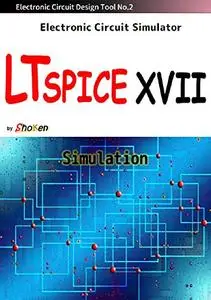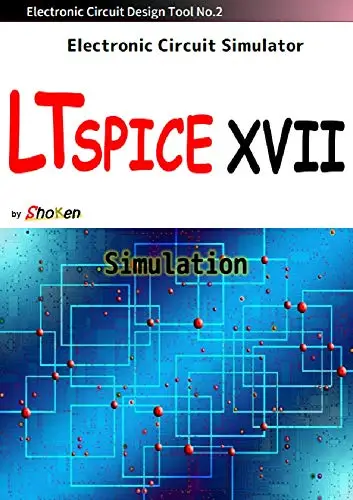Electronic Circuit Simulator LTspice XVII "Simulation" by Amit Kumar Singh
English | 2018 | ISBN: N/A | ASIN: B07H1WCTNJ | 114 pages | PDF | 12 Mb
English | 2018 | ISBN: N/A | ASIN: B07H1WCTNJ | 114 pages | PDF | 12 Mb
There are several free electronic circuit simulation software, but only LTspice provided by analog device can be used without limit. This is a useful tool for various purposes, such as checking the results calculated on the desk, checking the operation at circuit creation, so please use it by all means if you would like to learn electric circuit from now.
This manual is No. 2 "simulation" of the electronic circuit design TOOL series using the latest version 17.
LTspice XVII has improved the GUI, so that most command settings can now be used with the editor. For that reason, even for beginners, we summarized the setting method as much as possible so that we can execute it as we go through the procedure.
The circuit used as an example in this document uses a filter circuit that uses an operational amplifier created in Electronic Circuit Design TOOL No. 1 "Basic Operation and Circuit Creation", so please refer also to that book Please.
In this manual, we explain six analysis methods (transient analysis, AC analysis, DC sweep analysis, noise analysis, DC transfer function analysis, DC operating point analysis) and setting methods for temperature analysis, parametric analysis, and Monte Carlo analysis.
Even if you are a beginner, if you proceed according to the procedure, you can always learn the basic operation.
I will explain the table of contents of this book.
CHAPTER 1 Types of Analysis
1.1 Definition of Analysis Type
CHAPTER 2 Transient Analysis
2.1 Setting Signal Source Attributes
2.2 Analysis Settings
2.3 Running the Simulation
2.4 Selection of Plotting Method
2.5 Waveform Scaling
2.6 Addition of Waveform Viewer (Plot Screen)
2.7 Measurement with Cursor
2.8 Measurement by Dot Command
CHAPTER 3 AC Analysis
3.1 Setting Signal Source Attributes
3.2 Analysis Settings
3.3 Running the Simulation
3.4 Plotting Method
3.5 Waveform Scaling
3.6 Measurement with Cursor
3.7 Measurement by Dot Command
CHAPTER 4 DC Sweep Analysis
4.1 Analysis Settings
4.2 Running the Simulation
4.3 Plotting Method
4.4 Waveform Scaling
4.5 Measurement with Cursor
4.6 Measurement by Dot Command
CHAPTER 5 Noise Analysis
5.1 Analysis Settings
5.2 Running the Simulation
5.3 Plotting Method
5.4 Waveform Scaling
5.5 Measurement by Dot Command
CHAPTER 6 DC Transfer Function Analysis
6.1 Analysis Settings
6.2 Running the Simulation
CHAPTER 7 DC Operating Point Analysis
7.1 Analysis Settings
7.2 Running the Simulation
CHAPTER 8 Temperature Analysis
8.1 Change of Op Amp
8.2 Analysis Settings
8.3 Execution of Simulation by Dot Command
8.4 Measurement with Cursor
CHAPTER 9 Parametric Analysis
9.1 Edit Parts
9.2 Execution of Simulation by Dot Command
9.3 Measurement with Cursor
CHAPTER 10 Monte Carlo Analysis
10.1 Change of Circuit
10.2 Edit Parts
10.3 Execution of Simulation by Dot Command
CHAPTER 11 Setting Simulation Commands
11.1 Setting Transient
11.2 AC Analysis Settings
11.3 DC Sweep Setting
11.4 Noise Setting
11.5 DC Transfer Setting
11.6 DC op pnt Setting
CHAPTER 12 How to Set up Independent Voltage Source
12.1 DC Value and Small Signal AC Analysis (Ac) Settings
12.2 Functions Setting
Feel Free to contact me for book requests, informations or feedbacks.
Without You And Your Support We Can’t Continue
Thanks For Buying Premium From My Links For Support
Without You And Your Support We Can’t Continue
Thanks For Buying Premium From My Links For Support



